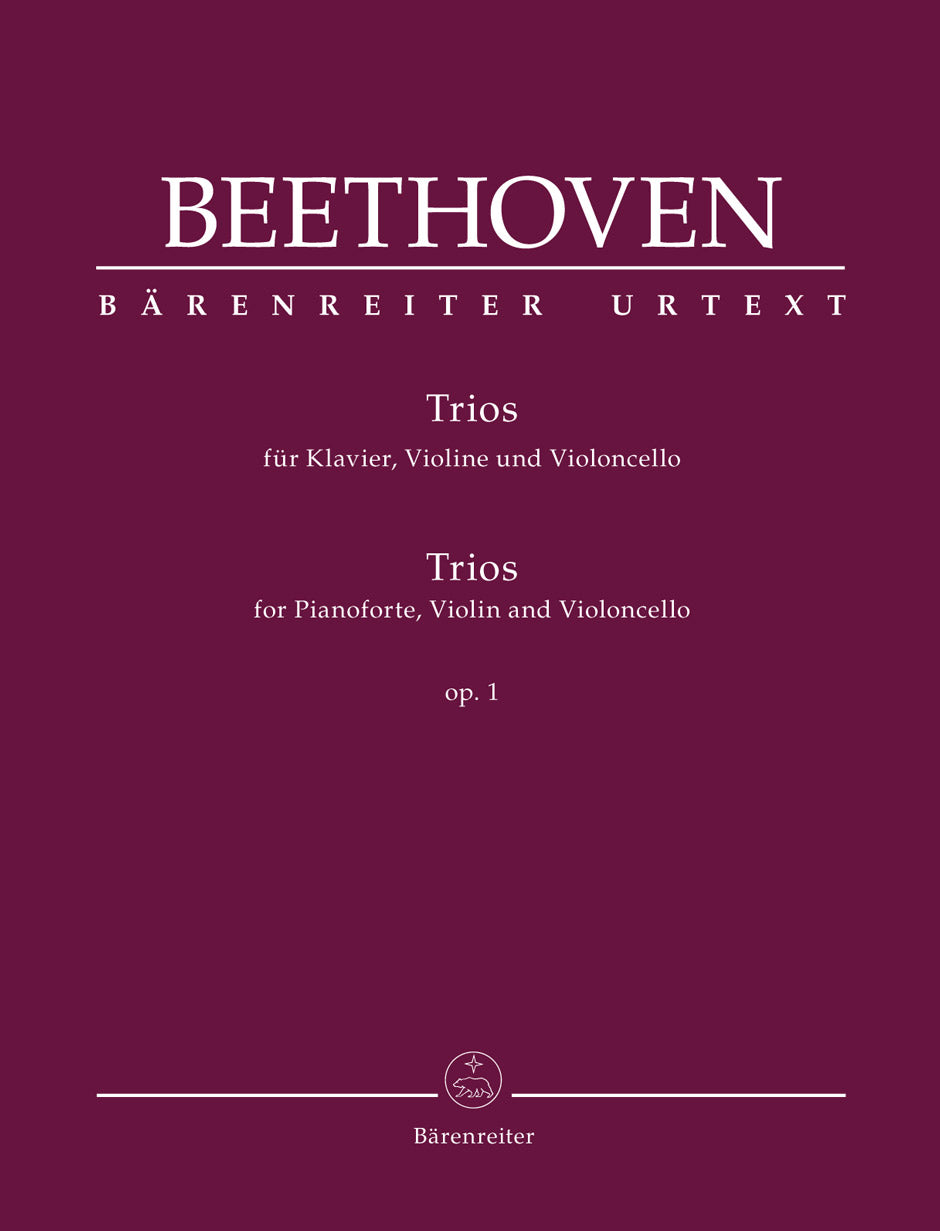
BARENREITER - 345062
Beethoven Piano Trios, Op. 1
Composer: Ludwig van Beethoven
Publisher: Bärenreiter
Instrumentation: Violin, Cello, Piano
Ensemble: Piano Trio
Format: Chamber Parts
Binding: Paperback
Dimensions: 12.2 in x 9.6 in
Pages: 220
Beethoven Piano Trios, Op. 1
Juilliard Store
144 West 66th Street
New York NY 10023
United States
Choose options
Beethoven Piano Trios, Op. 1
Juilliard Store
144 West 66th Street
New York NY 10023
United States
Beethoven Piano Trios, Op. 1
Juilliard Store
144 West 66th Street
New York NY 10023
United States
The list of the subscribers to the first printed edition of the trios is impressive because it includes influential aristocrats, many of whom were connected to Haydn as the dedicatees of his works. Apparently Haydn lent a helping hand here to his former student. Also Haydn’s compositional influence on Beethoven can be found in many aspects of the trios. However, ultimately it will have been the innovative elements that astonished and delighted the audience of early Vienna: the virtuosity and scope of the unusually large-scale works, the unprecedented extended coda of the outer movements, the radicality of the dynamic contrasts and the introduction of remote keys as a means of musical expression.
In order to clarify some unclear readings, the editor and Beethoven specialist Jonathan Del Mar consulted Beethoven’s markings in his op. 104 (an arrangement of the Trio op. 1, no. 3) – a source that has not been taken into consideration for any previous edition of this trio.
